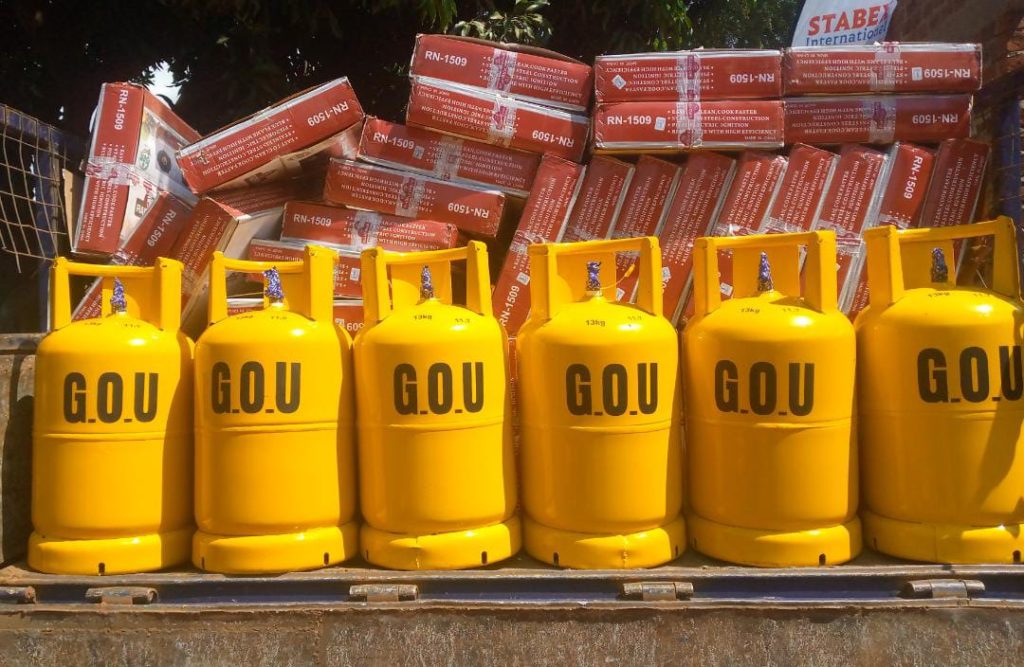
Uganda is charting a deliberate path towards a cleaner, more sustainable energy future. Guided by its National Energy Transition Plan, the country aims to achieve universal access to affordable, modern energy by 2030 and reach net-zero emissions by 2065—objectives that align closely with global climate commitments.
While this transition prioritises renewable energy sources such as solar and hydropower, it also embraces practical and inclusive solutions to meet everyday energy needs, particularly for cooking and heating. Among these, Liquefied Petroleum Gas (LPG) stands out as a critical transitional fuel. It offers the oil and gas sector a valuable opportunity to support Uganda’s clean energy ambitions by reducing the country’s dependence on biomass fuels and mitigating the adverse environmental and health impacts associated with wood and charcoal use.
Currently, about 90% of Uganda’s final energy consumption is derived from solid biomass fuels such as firewood and charcoal. This heavy reliance, combined with an annual population growth rate of 3% and a 10% annual increase in energy consumption over the past two decades, has placed enormous pressure on the country’s forests and energy systems. The impacts are far-reaching: environmental degradation, increased greenhouse gas emissions, and heightened exposure to indoor air pollution—particularly among women and children in rural households.
To address these challenges, the Government has prioritised the goal of ensuring every household has access to modern energy solutions. This includes promoting cleaner and more efficient alternatives for cooking and heating in the services sector, as well as encouraging industrial adoption of modern fuels to reduce reliance on solid biomass. In this context, LPG offers a scalable and effective solution that delivers immediate benefits.
Unlike biomass, LPG burns more cleanly, significantly lowering household air pollution and reducing greenhouse gas emissions. However, despite these advantages, only about 5% of Uganda’s population currently relies on LPG or electricity for cooking, and this usage is primarily concentrated in urban areas. This low uptake underscores the need for targeted policy and market interventions to increase adoption, particularly in rural and peri-urban communities.
Beyond household use, LPG has immense potential across various industrial sectors—including cement manufacturing, Agro-processing, breweries and distilleries, metal fabrication, mineral ore reduction, ammonia production, synthetic fuel manufacturing, and even power generation. For Uganda’s industries, transitioning from heavier fossil fuels such as Heavy Fuel Oil (HFO) to LPG represents a cleaner, more efficient energy pathway that aligns with both national development goals and global sustainability targets.
As of 2023, Uganda’s natural gas reserves were estimated at approximately 605 billion cubic feet (Bcf), including 259 Bcf of associated gas. During oil production, this associated gas will be separated from crude oil at the Central Processing Facility (CPF). The Government plans to utilize this gas for multiple purposes, including power generation, heating, LPG production, and other industrial utilities. Specifically, LPG production from the Kingfisher and Tilenga projects is projected at around 20,000 and 80,000 tons per year, respectively.
These volumes signal a major turning point for Uganda’s LPG market. Once commercial oil and gas production begins, the country is expected to produce more than 200,000 tons of LPG annually—a dramatic increase compared to current domestic consumption, which stands at just 25,000 tons per year, or 0.58 kilograms per capita. Projections show that if left to grow organically, LPG consumption could reach only 53,000 tons by 2030—far below the anticipated supply.
To close this gap between supply and demand, the Government is implementing initiatives aimed at making LPG more affordable, accessible, and acceptable across the country. These include incentives for private sector investment in LPG infrastructure such as storage facilities, cylinder manufacturing, refilling stations, and distribution networks. Additionally, public awareness campaigns and behavioural change initiatives are essential to encouraging adoption—especially in rural and peri-urban communities.
LPG is not just a transitional fuel; it is a cornerstone of Uganda’s energy transition strategy. It offers immediate environmental benefits by reducing deforestation and carbon emissions, while improving air quality and public health. Simultaneously, it addresses critical energy access needs in households and enhances industrial competitiveness. Moreover, a thriving LPG ecosystem can create new economic opportunities—generating jobs, attracting investment, and strengthening local supply chains.
As Uganda moves forward in its journey toward a modern, inclusive, and sustainable energy system, LPG is poised to play a transformative role. It provides a realistic and impactful bridge between traditional fuels and long-term renewable solutions, supporting the country’s efforts to meet its energy and climate goals while improving the quality of life for millions of Ugandans.
BySteven Enach,
Director Midstream at the PAU
Email; corporateaffairs@pau.go.ug
